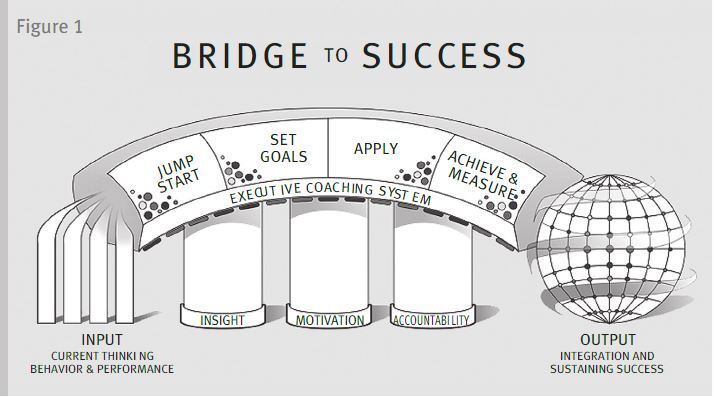Mentorship and coaching play crucial roles in fostering professional growth, enhancing skills, and advancing careers. These programs provide valuable opportunities for supporters to learn from experienced mentors, receive personalized guidance, and develop the competencies needed to excel in their roles. This article explores the principles of effective mentorship and coaching, strategies for building robust mentorship programs, and best practices for mentoring and coaching supporters to achieve their full potential.
Mentorship involves a supportive relationship between a mentor and a mentee, where the mentor provides guidance, advice, and feedback based on their experiences and expertise. Coaching, on the other hand, focuses on facilitating the development of specific skills, behaviors, or goals through structured conversations, assessments, and action plans. Both mentorship and coaching aim to empower supporters to enhance their performance, overcome challenges, and achieve their professional objectives (Andrianto, R., 2023).
Sources for this Article:
Clutterbuck, D. & Spence, G.B. (2016). Working with goals in coaching. In T. Bachkirova, G. Spence & D. Drake (Eds.), The SAGE Handbook of Coaching. London: Sage
Kram, K. E., & Higgins, M. C. (2009). A new mindset on mentoring: Creating developmental networks at work. MIT Sloan Management Review, 50(1), 88-93.
Hauser, L. (2009). Evidence-based Coaching. OD PRACTITIONER, Vol. 41 No. 1.
Andrianto, R. (2023). Employee Development: Coaching and Mentoring Approach to Sustainability Organization. Formosa Journal of Applied Sciences (FJAS) Vol. 2, No. 7, 2023: 1797-1806.
M. A. Higgins and K. E. Kram (2001). “Reconceptualizing Mentoring at Work: A Developmental Network Perspective,” Academy of Management Review 26, no. 2: 264-298
Building Effective Mentorship Programs.
Define Program Objectives. Clarify the purpose, goals, and expectations of the mentorship program, aligning them with organizational priorities and supporter development needs. Define the roles and responsibilities of mentors and mentees, establishing clear guidelines for participation and engagement. There is an argument on whether mentorship programs should be mandatory or voluntary and I have not seen that one program is more positive than the other, however, mandatory mentoring usually yields more negative traits.
Recruit and Train Mentors. Identify potential mentors within the organization who possess relevant experience, expertise, and interpersonal skills. Provide comprehensive training and resources to mentors, equipping them with the tools and techniques needed to effectively support and develop their mentees. Mentors will need training specific to interpersonal communication, conflict resolution, and personality types.
Match Mentors and Mentees. Match mentors and mentees based on their goals, interests, and areas of expertise, ensuring compatibility and alignment of objectives. Consider factors such as personality, communication style, and career aspirations when making mentorship pairings to facilitate productive and meaningful relationships. It is essential to monitor the relationships to ensure mentors connect with mentees.
Establish Regular Communication and Feedback Sessions. Encourage regular communication and interaction between mentors and mentees, fostering trust, rapport, and mutual respect. Schedule structured meetings, check-ins, and progress reviews to facilitate ongoing learning, feedback, and goal setting.
Evaluate and Adjust. Continuously monitor and evaluate the effectiveness of the mentorship program, soliciting feedback from mentors, mentees, and stakeholders. Identify areas for improvement and make necessary adjustments to enhance program outcomes, engagement, and satisfaction.
Building Effective Coaching Programs.
I had the opportunity to serve as an Observer Controller and Trainer at the Joint Readiness Training Center, in Fort Polk Louisiana. The goal was to coach infantry brigades to execute mission-essential tasks before they deployed into a combat zone. On each iteration through the center, I provided not only book information on the right ways but we also analyzed lessons learned from units that came out of combat zones. This introduced new ways of executing tasks, especially when they were more efficient or more successful.
As you can imagine, I learned from those that I was coaching as well. All of my fellow trainers picked up great lessons in each rotation. Coaches who had years of rotations under their belt were looked up to and had exceptional coaching skills. We all learned important techniques for setting up coaching plans, providing positive critical feedback, and how to effectively conduct operations. I learned that coaching is an important part of organizational and talent management. Here is ‘a way’ of setting up a good coaching program.

Identify Current Experience and Goals. Building on a good foundation is necessary to have a solid way forward. Before a unit participated in training at Fort Polk, they would provide current training levels, their goals, and their shortfalls. This gave us coaches the ability to plan where to focus our coaching efforts. It saves time and has a greater chance of success. “More specifically, they found that specific (clear) and difficult goals (when supported by unambiguous feedback) have a tendency to reliably motivate people towards the achievement of such goals” (Clutterbuck, D. & Spence, G.B., 2016).
Develop a Goal Plan. This can be specific or time-based in order to meet the desired goals. You need some structure to the plan. It must help deconflict events that train or enable goal accomplishment. The plan also helps stay on target so your “goal setting develops desired future outcomes that align personal and professional goals” (Hauser, L., 2009).
Execute the Plan. Follow the plan you developed, adjusting where necessary to achieve your objectives. The Joint Readiness Training Center has milestones and triggers that allow scenarios to adapt to the unit conducting training. Your operations should think through critical learning events, roadblocks to training, and ways to get back on track if something stumps the entity being coached. You also want to execute the plan within the time you set. Execution should always include routine reporting and measuring opportunities so you can judge progress.
Assess and Motivate. Use execution reporting and analysis to identify motivational techniques you can use to stay on track. We provided a mid-term report to units so they had time to adjust their goals or place more emphasis on certain goals that fell behind. I also assisted units in training with individual coaching sessions that were designed to help get people back on track. Clutterbuck, D. & Spence, G.B. (2016) discussed stretch goals, those perceived as not achievable, where leaders break them into step goals and had better results at motivating people.
Best Practices for Mentoring and Coaching:
Before I discuss some skills to develop better mentors and coaches, I want to talk about the need to look for mentors outside your organization. It is very important to have experienced leaders that you can rely on but are not in your leadership circle. “It means looking more widely for support and guidance beyond an immediate boss or assigned mentor” (Kram, K. E., & Higgins, M. C., 2009). This gives you more opportunity to speak freely and hear different sides.
M. A. Higgins and K. E. Kram (2001) first described this as a “Developmental Network.” This is different from looking for an organizational mentor. A network of mentors will give you a much broader understanding of your market and a wider opinion. The research found that employees who met once a month with a good group of mentors “enhanced employee engagement and satisfaction, faster cycle times in new product development, customer satisfaction, and/or employee retention” (Kram, K. E., & Higgins, M. C., 2009).
Leaders and supporters need to pick the right mentors. The key is knowing where you need support, what are your goals? You should seek mentors for your network that can assist with those needs. Approaching leaders, especially executives can be difficult, but it is [Subscribe to continue reading]
goto:
















